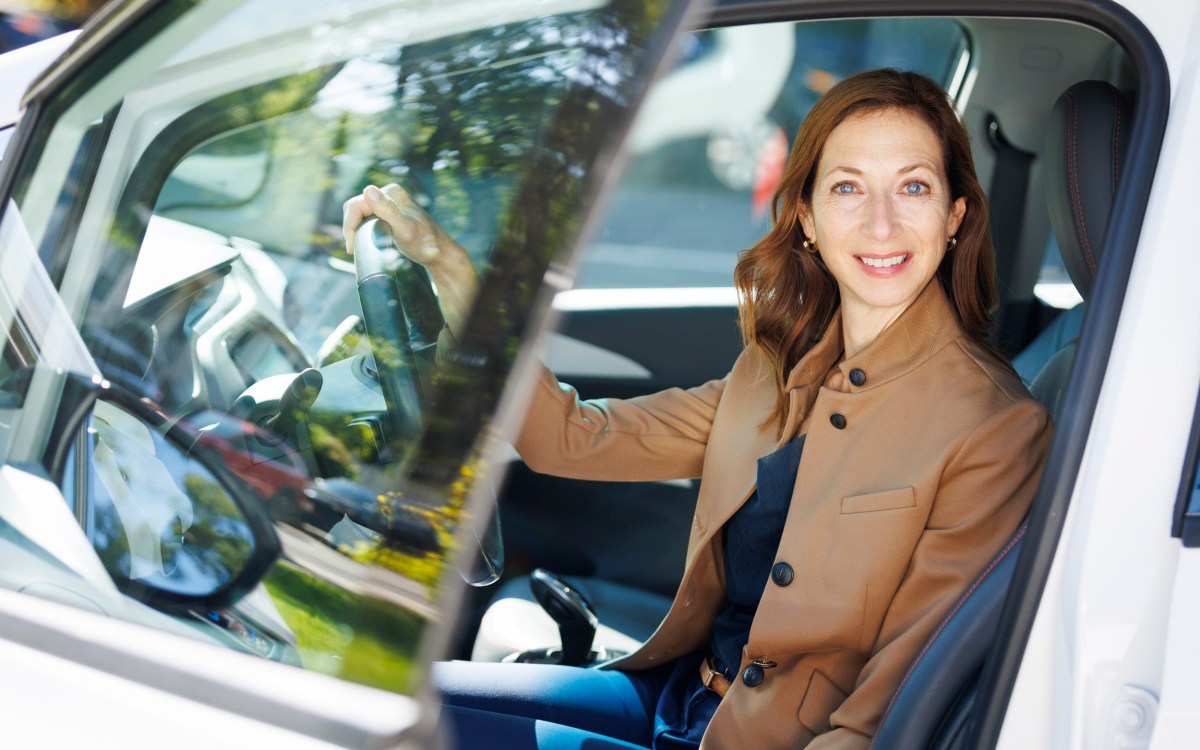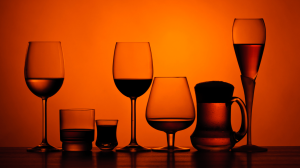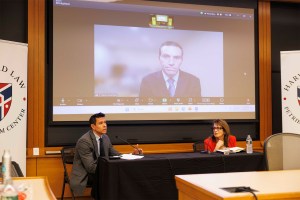Science & Tech
-
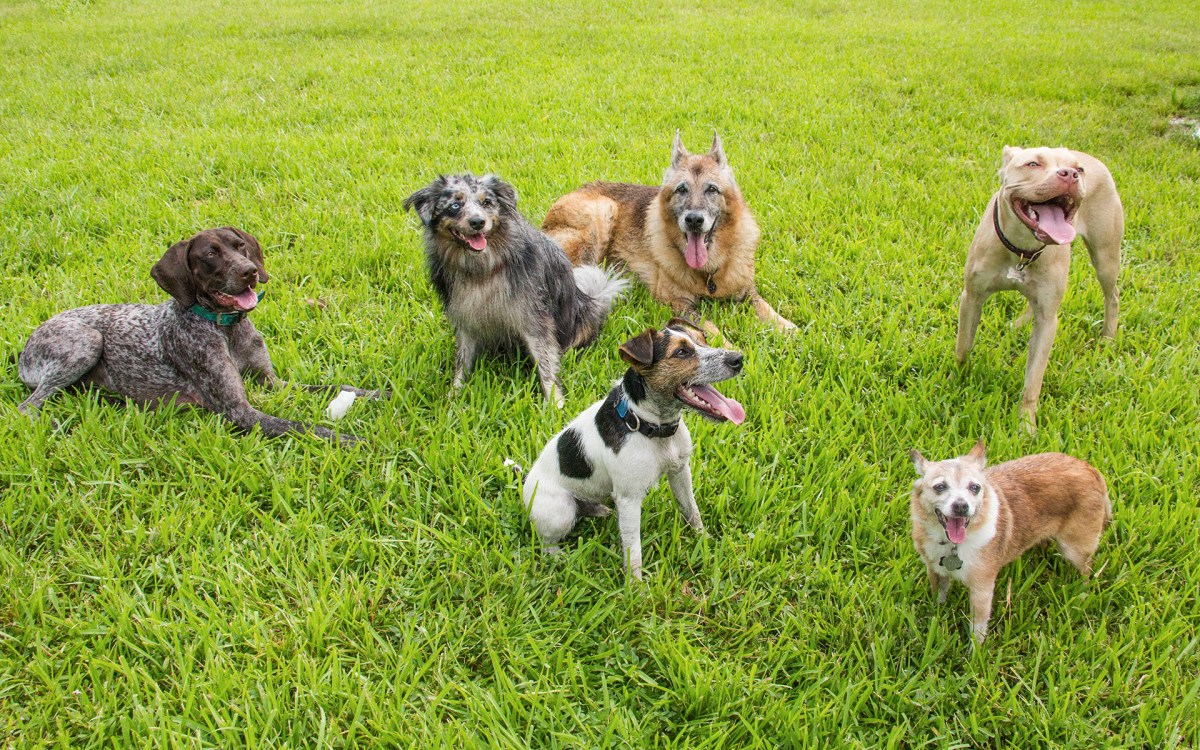
Harsh past might bare its teeth
Early adversity leads to higher aggression and fearfulness in adult canines, study says

-
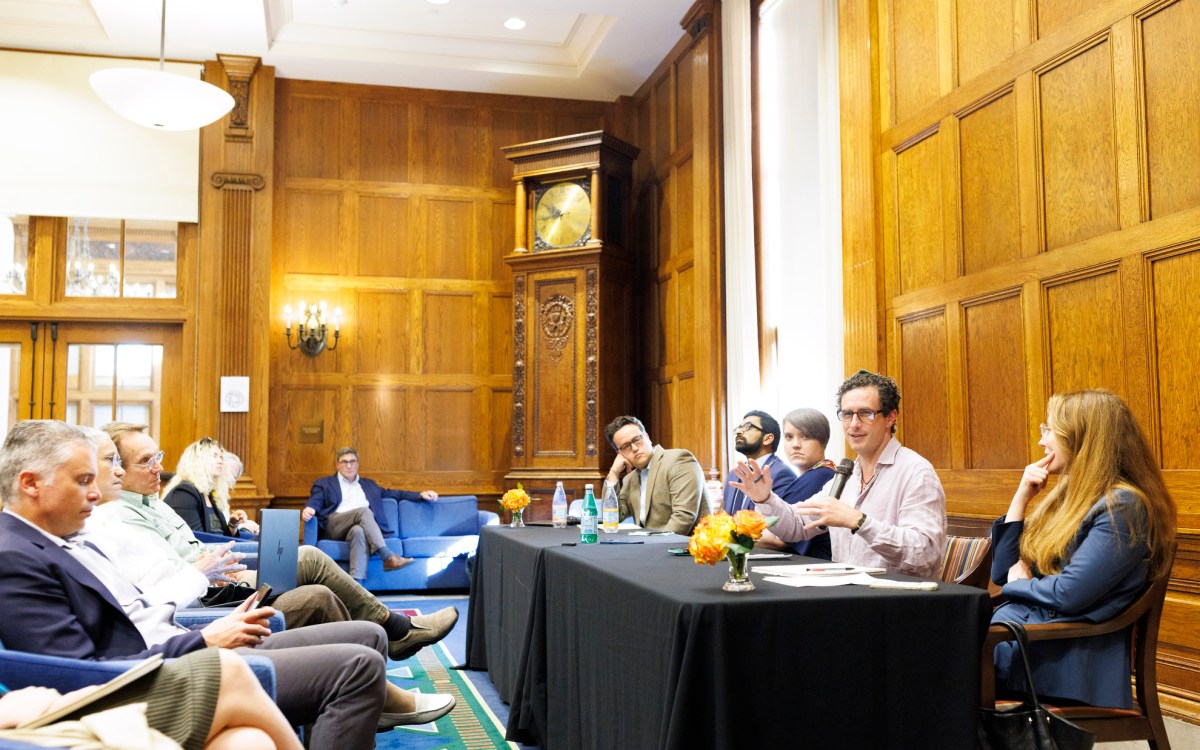
What will AI mean for humanity?
Scholars from range of disciplines see red flags, possibilities ahead
-
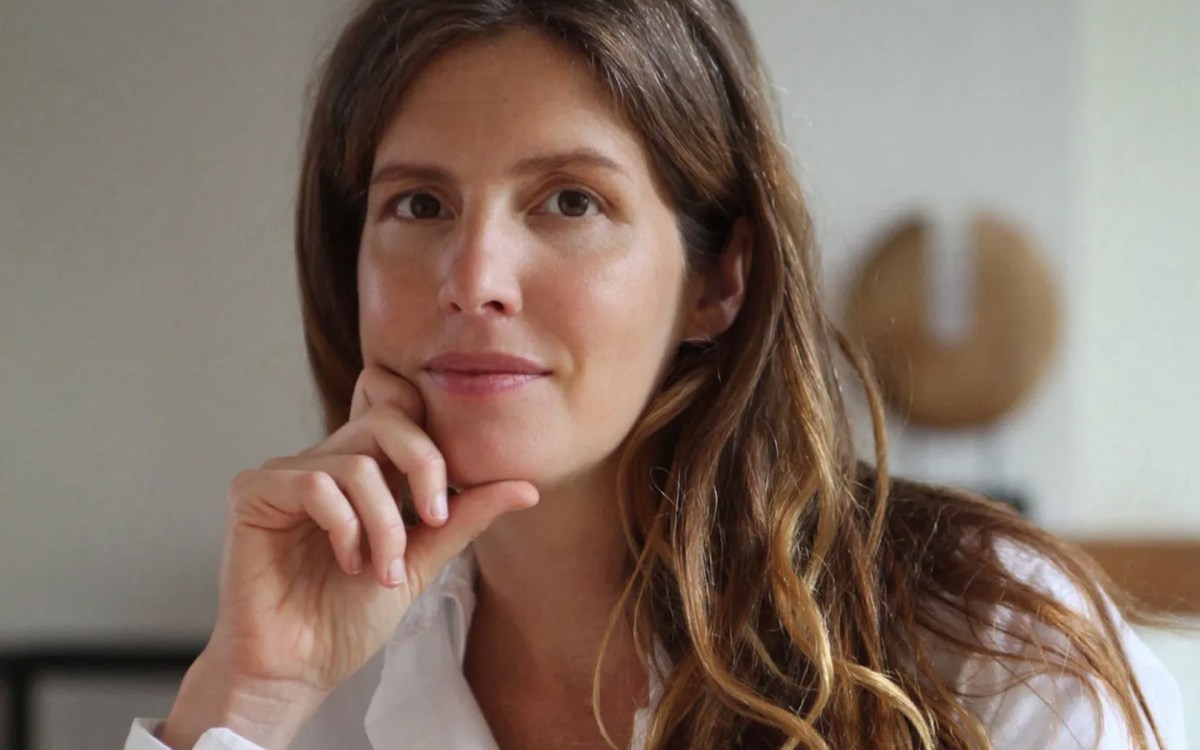
‘Human exceptionalism is at the root of the ecological crisis’
Saving the planet requires getting over ourselves, argues author of ‘The Arrogant Ape’
-
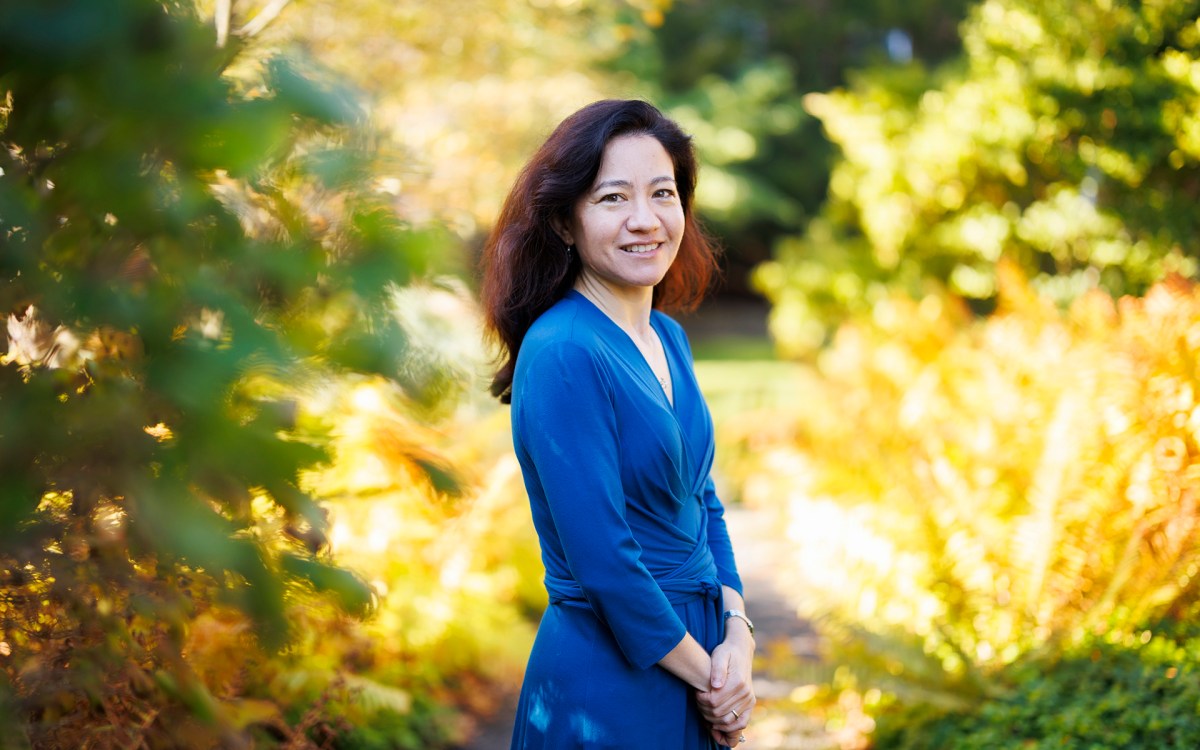
Lauren Williams awarded MacArthur ‘genius grant’
Math professor honored for theoretical breakthroughs with sometimes surprising applications across phenomena such as tsunamis, traffic
-
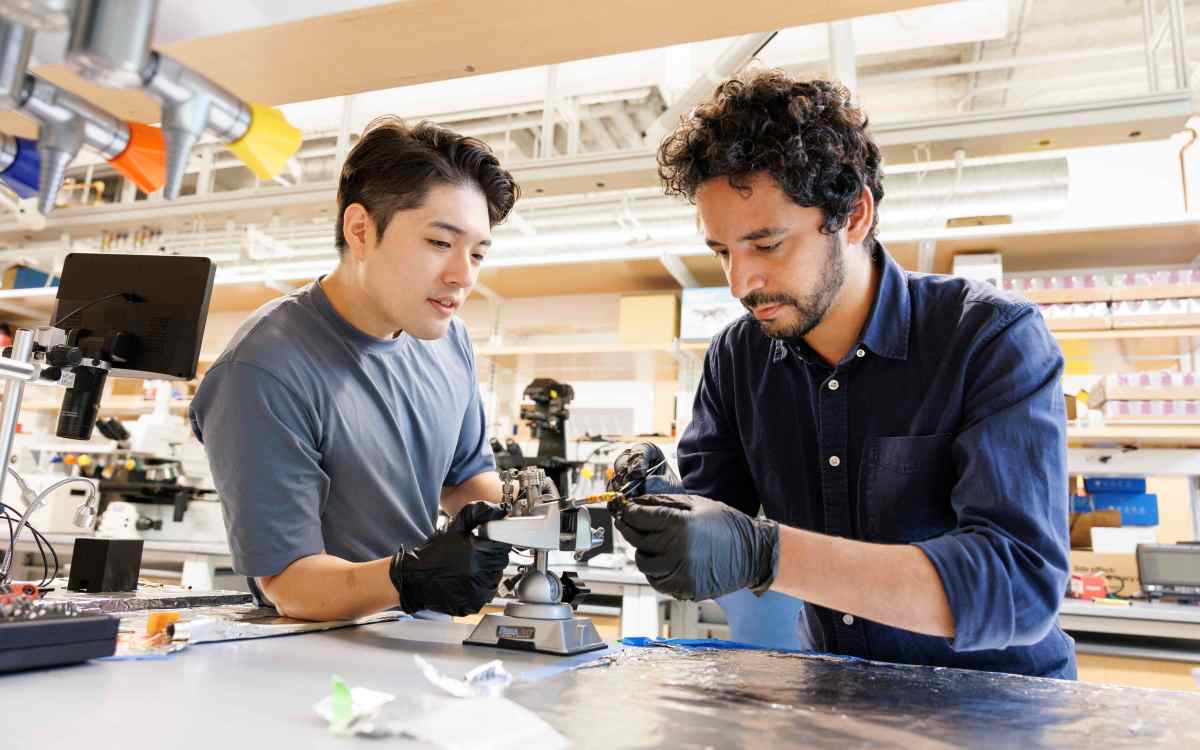
-
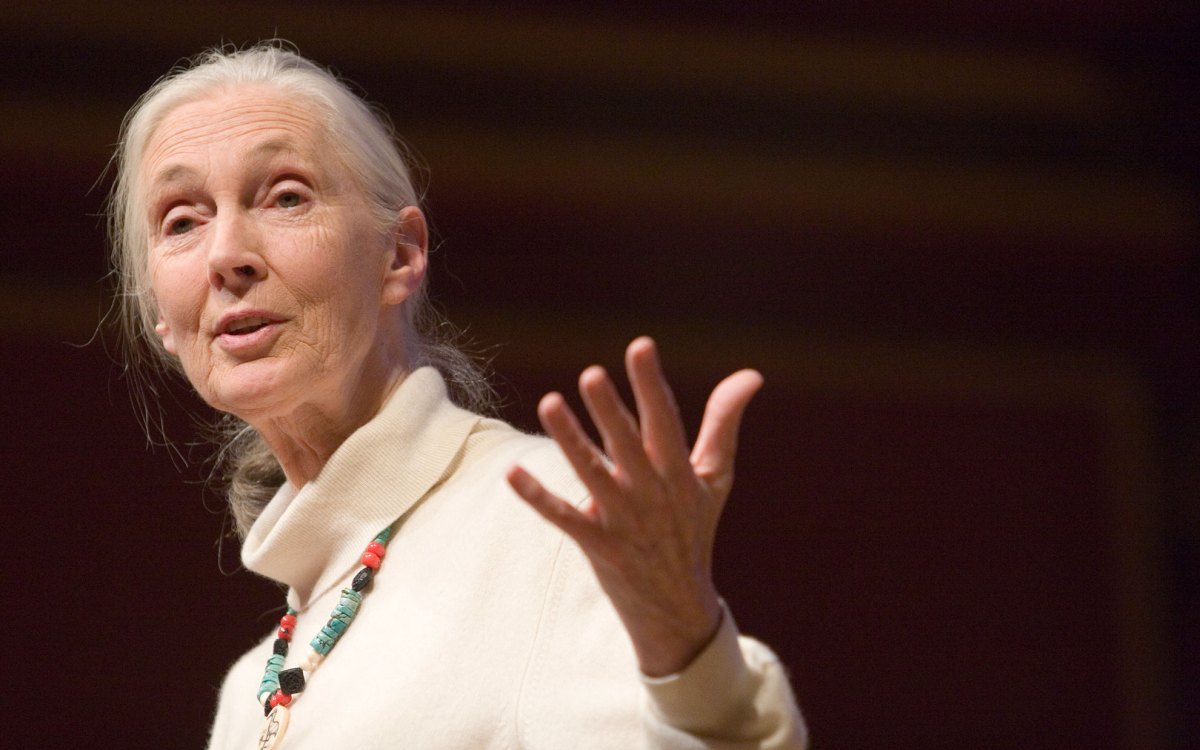
‘She had a sense of caring for everybody that she encountered.’
Richard Wrangham remembers his teacher and colleague Jane Goodall as a force of science, empathy, and hope
-
Earth’s sister in the crosshairs
A new book by Harvard astronomer Dimitar Sasselov explains the revolution in understanding the universe that views life as a natural part of planetary evolution and that has researchers on the brink of finding worlds that echo this one.
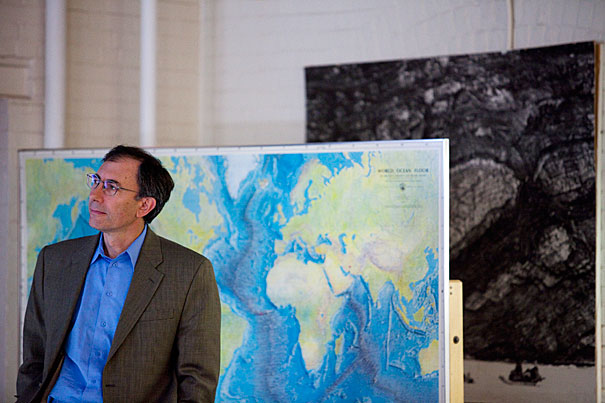
-
Elegant entanglement
Harvard scientists have taken a critical step toward building a quantum computer — a device that could someday harness subatomic particles such as electrons to perform calculations far faster than the most powerful supercomputers.
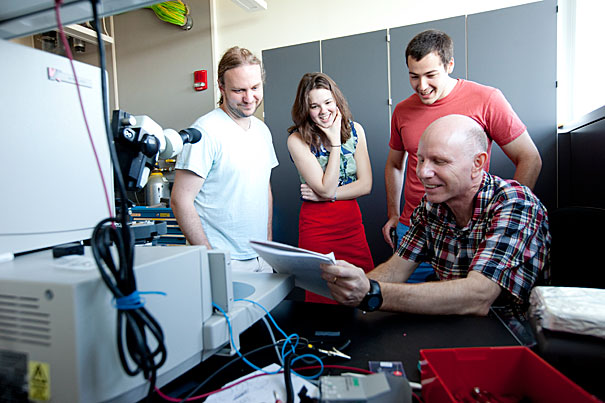
-
Self-assembly as a guide
Vinothan Manoharan, an assistant professor of chemical engineering and physics at the School of Engineering and Applied Sciences, wants to make self-assembly — when particles interact with one another and spontaneously arrange themselves into organized structures — happen in the laboratory to treat life-threatening diseases or manufacture useful objects.
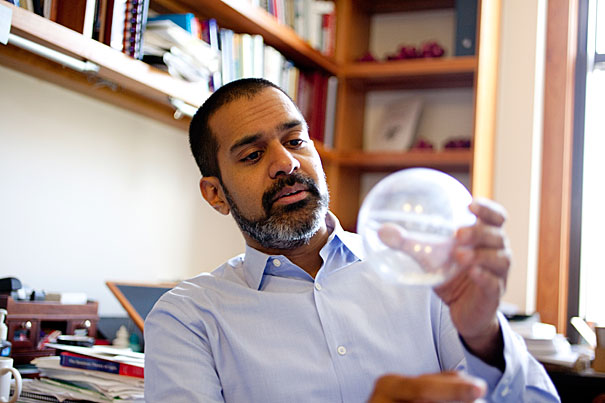
-
Making drinking water clean
Free water purification is needed to head off more than a million childhood deaths from diarrhea each year, says Gates Professor of Developing Societies Michael Kremer.
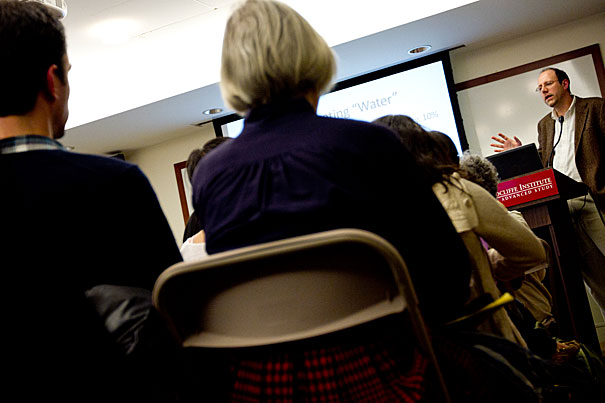
-
Dangerous heat
New research from the Harvard School of Public Health suggests that seemingly small changes in summer temperature swings may shorten life expectancy for elderly people with chronic medical conditions, and could result in thousands of additional deaths each year.
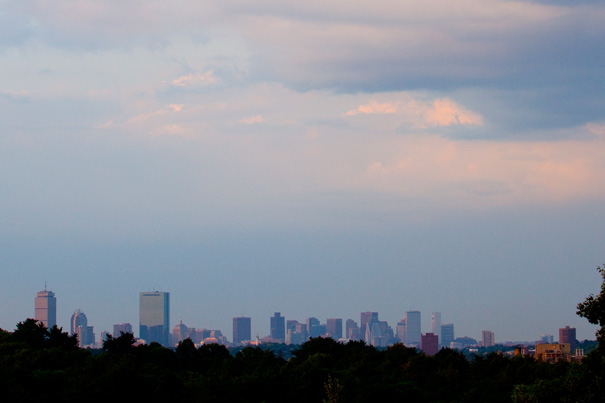
-
Technology transforms energy outlook
The U.S. energy picture has changed dramatically in recent years, with a flood of shale gas making natural gas a more attractive fuel option and the opening of new supplies cutting U.S. dependence on Middle Eastern oil, an energy expert says.
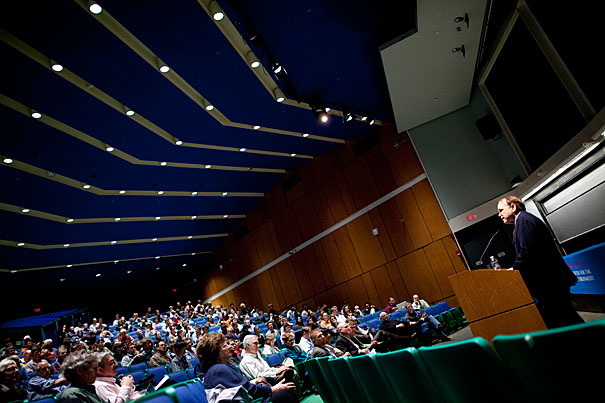
-
Black holes feed on stars
New research by astronomers at the University of Utah and the Harvard-Smithsonian Center for Astrophysics shows that supermassive black holes can grow big by ripping apart double-star systems and swallowing one of the stars.
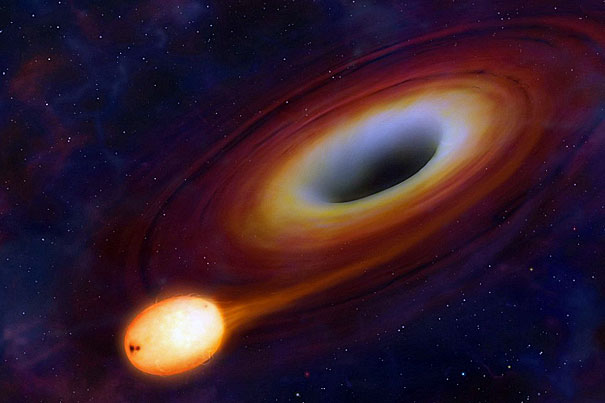
-
Bubble, bubble — without toil or trouble
Among the advances linked to Harvard is one that came in a field not normally associated with the University: the culinary arts. Cooks use a professor’s 1850s invention, baking powder, as a time-saving replacement for yeast.

-
The greenest lab, up and running
The renovation of Harvard’s Sherman Fairchild Building may have seemed inconsequential to the casual observer because the exterior barely changed. However, as a result of a two-year project to accommodate the Stem Cell and Regenerative Biology Department (SCRB), the interior has been transformed into one of the University’s greenest and most efficient laboratory spaces.
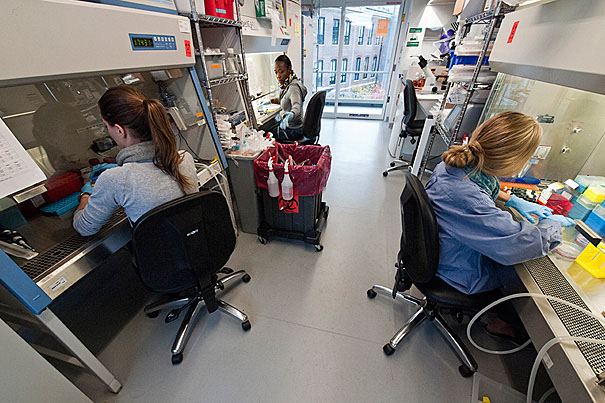
-
Ideas galore
Students participating in the Harvard College Innovation (I3) Challenge this year generated dozens of promising ideas to improve the quality of daily life.
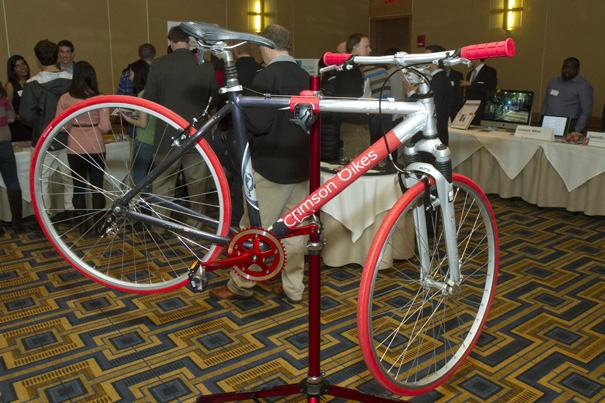
-
You, revealed
“X-Rays of the Soul: Rorschach and the Projective Test,” at Harvard’s Collection of Historical Scientific Instruments, tells the story of the projective test movement and portrays the heady confidence that science could be used to extract and access the most human parts of human beings.
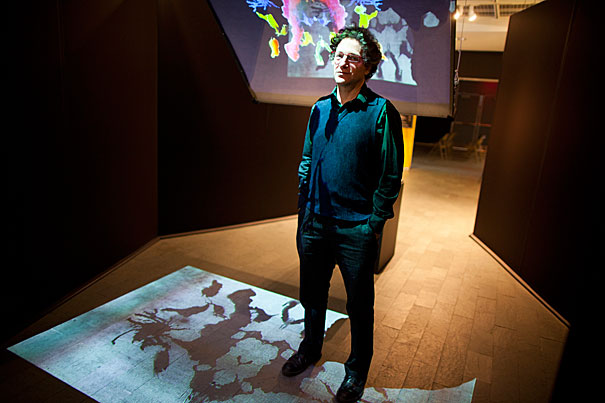
-
Nurturing the seeds of innovation
The bond between Harvard and Silicon Valley is a close one. The region is home to a powerful network of alumni willing to offer mentorship to students and recent graduates who are dreaming big. Taking advantage of that network, SEAS and HBS recently came together to organize the trip to Palo Alto.
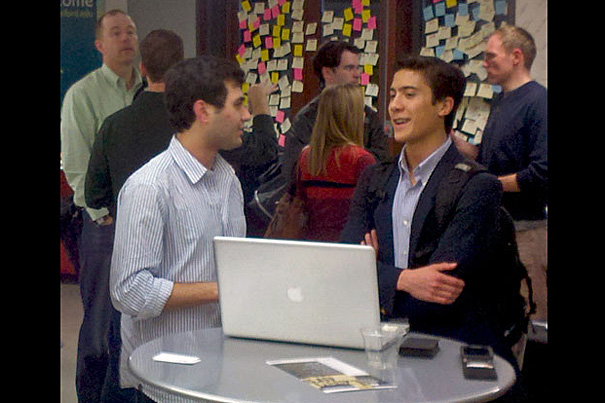
-
Buckling under pressure
Inspired by a spherical toy that expands and collapses, researchers at Harvard and MIT have created a new type of engineered capsule, called a “buckliball,” that exploits the phenomenon of buckling. The buckliball is the first morphable structure to incorporate buckling as a desirable engineering design element.
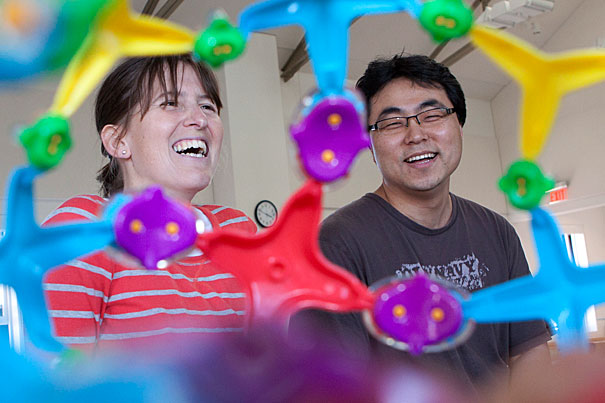
-
Planet starship
Seven years ago, astronomers boggled when they found the first runaway star flying out of our galaxy at a speed of 1.5 million miles per hour. The discovery intrigued theorists, who wondered: If a star can get tossed outward at such an extreme velocity, could the same thing happen to planets? New research shows that the answer is yes.
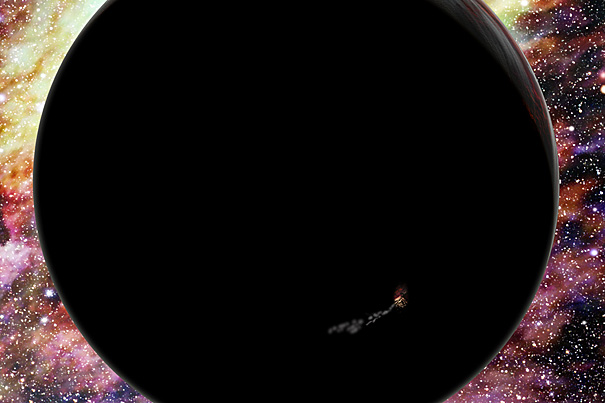
-
In a drying Amazon, change looms
If the Amazon becomes drier, as predicted by climate models, the forest will see a shift toward tree species that are drought tolerant and, in some cases, will lead to a savannah’s mix of trees and grasses, Robert F. Kennedy Visiting Professor Guillermo Goldstein says.
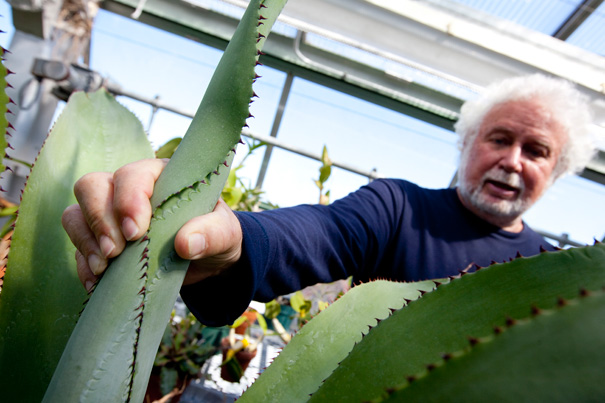
-
New frontier in archaeology
Jason Ur, the John L. Loeb Associate Professor of the Social Sciences, worked with Bjoern Menze of MIT to develop a system that identified ancient settlements based on a series of factors — including soil discolorations and the distinctive mounding that results from the collapse of mud-brick settlements.
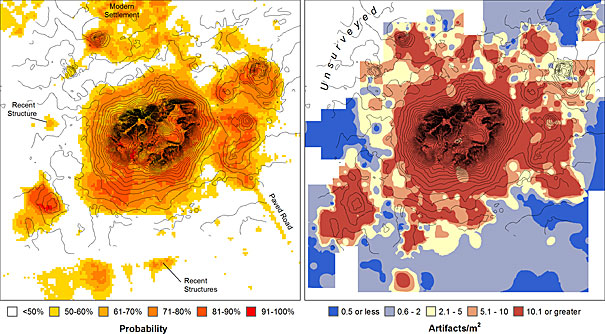
-
A vision of computing’s future
In 1978, while a student at Harvard Business School, Dan Bricklin conceived of VisiCalc, the first electronic spreadsheet program for personal computers. The result helped to spark a digital revolution in business and made desktop computers a must-have item in many offices.
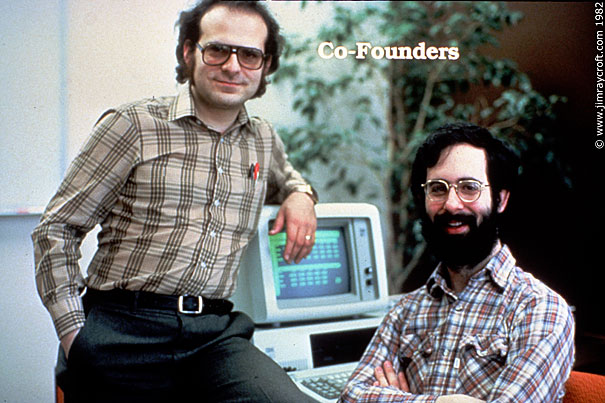
-
‘A timeout from your regular life’
Scientist Benny Shilo left his developmental biology lab to spend a year as a fellow at Radcliffe, where he explores the intersection of art and science to foster greater public understanding.
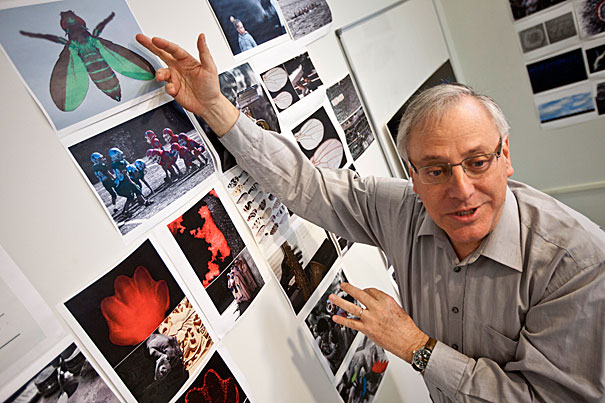
-
Harvard heads Southwest
More than 300 Harvard alumni, students, and guests gathered at the South by Southwest Interactive festival in Austin, Texas, Sunday for “Digital Harvard in Austin,” a first-of-its-kind event sponsored by Alumni Affairs & Development.
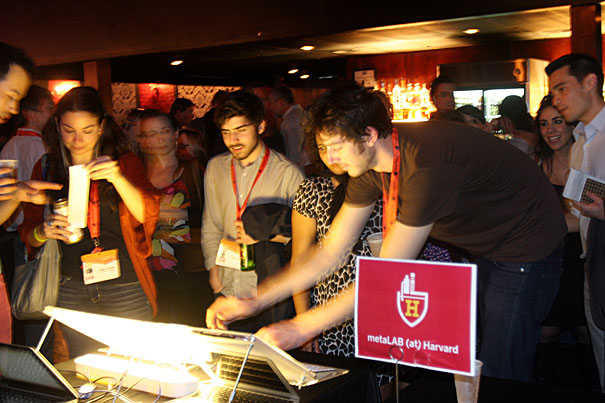
-
To help the environment, manufacture
An American manufacturing revival is needed if the United States is to transform its energy mix at the scale necessary to blunt coming climate change, the former chairman of the Sierra Club said in a Harvard University Center for the Environment discussion on the future of energy.
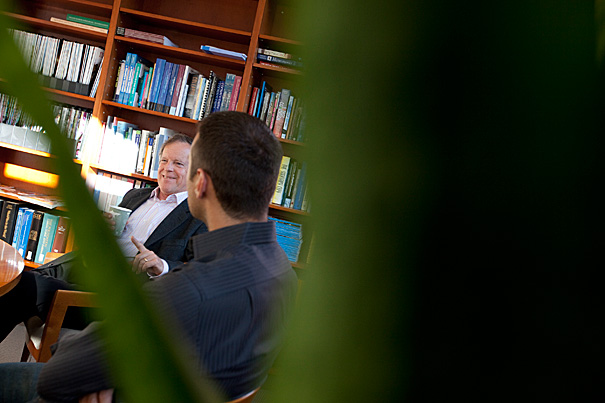
-
Magnetism on the moon
A team of researchers from Harvard, MIT, and the Institut de Physique du Globe de Paris have proposed a surprisingly simple explanation for magnetic anomalies that have baffled scientists since the mid-1960s, suggesting they are remnants of a massive asteroid. As described in a paper published in Science, the researchers believe an asteroid slammed into the moon 4 billion years ago, leaving behind an enormous crater and iron-rich, highly magnetic rock.
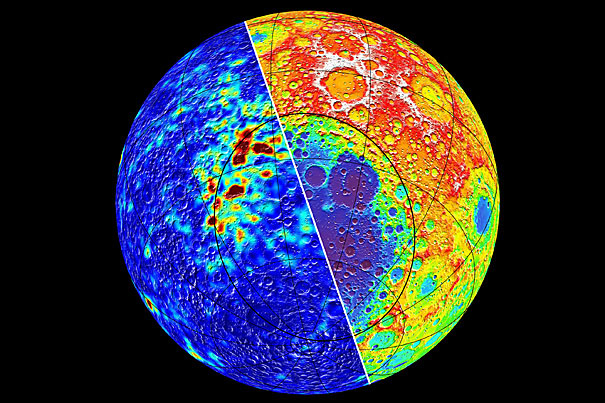
-
A new view of DNA
A new imaging technique, developed by Erez Lieberman-Aiden, a Junior Fellow of the Society of Fellows, is giving scientists their first three-dimensional view of the human genome, one that is already shedding new light on a number of what Liberman-Aiden calls the “central mysteries of biology.”
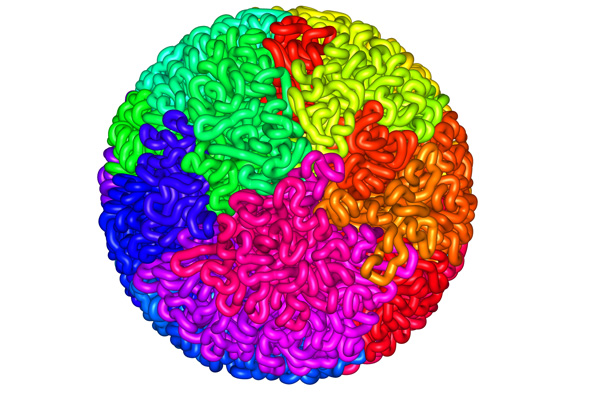
-
Building invisibility cloaks starts small
Working at a scale applicable to infrared light, a Harvard team has used extremely short and powerful laser pulses to create 3-D patterns of tiny silver dots within a material. Those suspended metal dots are essential for building futuristic devices like invisibility cloaks.
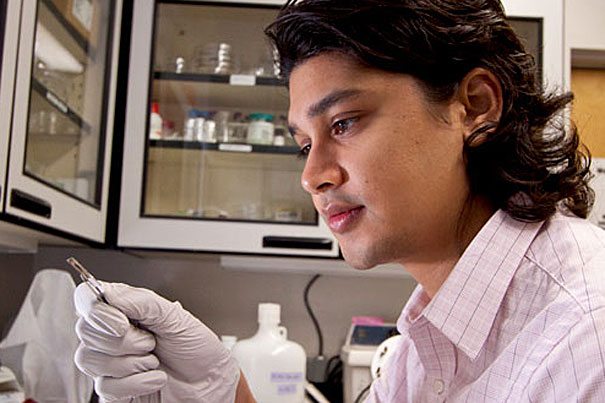
-
On climate issues, look to states
The head of California’s air pollution regulatory board said Feb. 27 that with climate change action stalled in Washington, D.C., the states are taking the lead in creating ways to reduce carbon emissions.
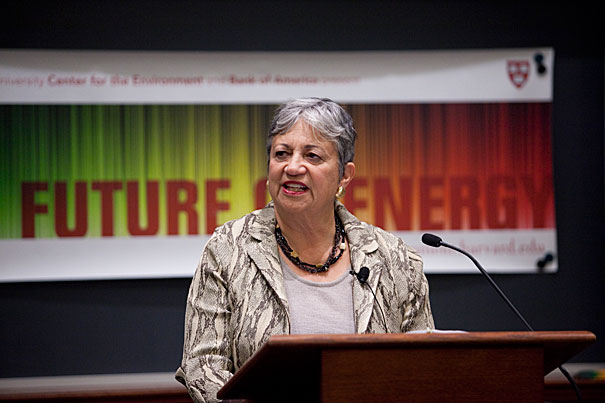
-
Circumstances that color our perception
Dozens of Harvard faculty and students gathered at Emerson Hall on Feb. 23 to ponder the nature of perception with Ned Block, the Silver Professor of Philosophy, Psychology and Neural Science at New York University (NYU) and one of the country’s leading thinkers on consciousness. Block’s lecture, “How Empirical Facts about Attention Transform Traditional Philosophical Debates about the Nature of Perception,” explored prevailing notions of perception by looking at how we see and pay attention to objects we encounter.
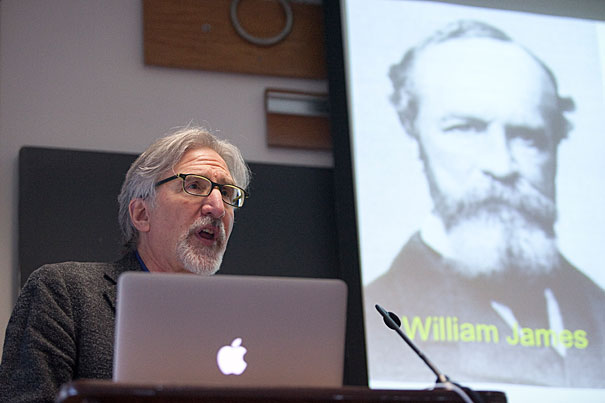
-
Funding success, and finding it
Four years ago, Harvard’s Office of Technology Development launched its Accelerator Fund, a $10 million revolving account to be used as a bridge across the “valley” between creation and development. The fund is proving to be just such a bridge.
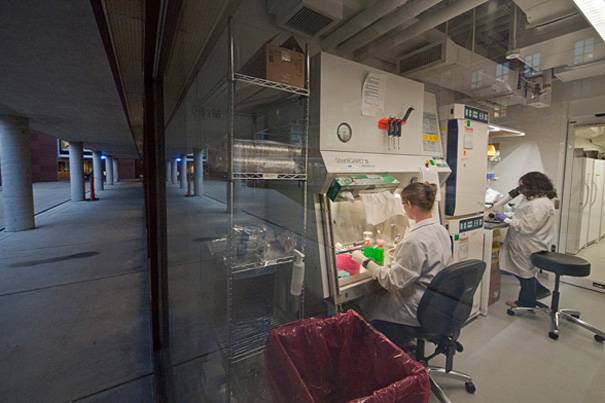
-
Model situation?
Researchers at the Harvard School of Engineering and Applied Sciences (SEAS) have shown that the primary explanation for the reduction in CO2 emissions from power generation that year was that a decrease in the price of natural gas reduced the industry’s reliance on coal.
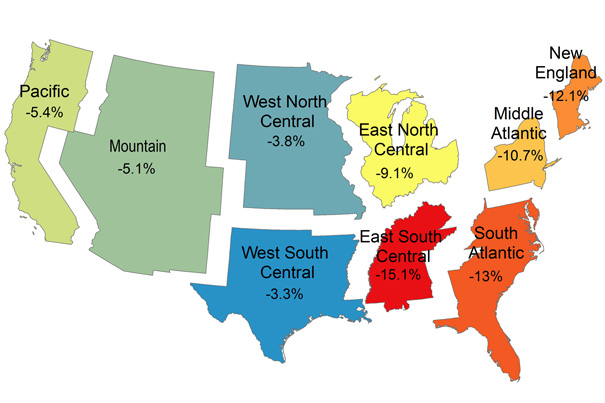
-
Nanoparticles shine with customizable color
Engineers at Harvard have demonstrated a new kind of tunable color filter that uses optical nanoantennas to obtain precise control of color output. The advance has the potential for application in televisions and biological imaging, and could even be used to create invisible security tags to mark currency.

-
In distant space, a water world
Observations by NASA’s Hubble Space Telescope have added a new type of planet to the mix. By analyzing the previously discovered world GJ1214b, astronomer Zachory Berta of the Harvard-Smithsonian Center for Astrophysics and colleagues proved that it is a water world enshrouded by a thick, steamy atmosphere.
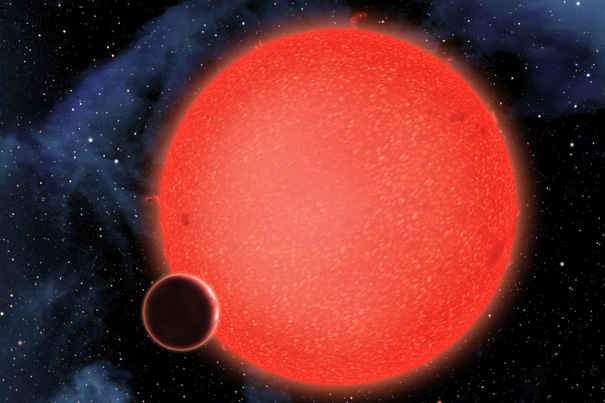
-
Right choice, but not the intuitive one
When faced with a tough choice, we already have the cognitive tools we need to make the right decision, Daniel Gilbert, professor of psychology, told a Harvard Law School audience on Feb. 16. The hard part is overcoming the tricks our minds play on us that render rational decision-making nearly impossible.

